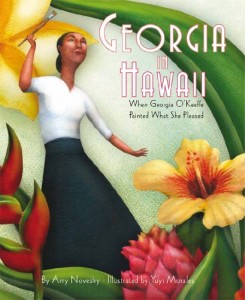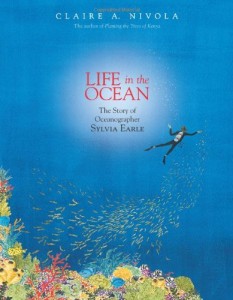new posts in all blogs
Viewing: Blog Posts Tagged with: Michaela MacColl, Most Recent at Top [Help]
Results 1 - 12 of 12
How to use this Page
You are viewing the most recent posts tagged with the words: Michaela MacColl in the JacketFlap blog reader. What is a tag? Think of a tag as a keyword or category label. Tags can both help you find posts on JacketFlap.com as well as provide an easy way for you to "remember" and classify posts for later recall. Try adding a tag yourself by clicking "Add a tag" below a post's header. Scroll down through the list of Recent Posts in the left column and click on a post title that sounds interesting. You can view all posts from a specific blog by clicking the Blog name in the right column, or you can click a 'More Posts from this Blog' link in any individual post.
Right now, in my social media networks, private and public conversations are taking place. People are--to put it mildly--objecting to what Michaela MacColl has written in The Lost Ones. It purports to be a story about two Native children who ended up at Carlisle Indian Industrial School, and is told from the perspective of the girl, Casita.
MacColl's book is due out in October of 2016 from Calkins Creek, which is an imprint of Highlights. It is in their "Hidden Histories" series, which begs a question. Who is this history "hidden" from? The Lost Ones is being marketed as one in which MacColl (she isn't Native) and her publisher, are doing A Good Thing. They are Saving Native People and our history from being hidden.
I wonder, though, is MacColl the right person to write and tell this story? The two children in the book were real children. Does MacColl have what she needs to tell this very delicate story, with the integrity the children deserve?
My short answer is no. The promotional language for the book echoes what I found in the story, too. With The Lost Ones, we have a story about Good White People Doing Good Things for Native Kids. Yuck.
The Author's Note
People may argue that MacColl did her homework. In the Author's Note, she says that she reached out to "Richard Gonzales, Vice Chairman of the Lipan Band of Texas." He met with her and in that meeting, suggested she talk with Daniel Romero, who is "Chairman of the Lipan Band of Texas."
Sounds legit, right? Here's the thing, reviewers and editors, and writers, too! It can be very hard to determine if your sources are ok.
I wonder if MacColl knows, for example, that this "Lipan Band of Texas" is not recognized by the federal government, or the State of Texas, either. The one recognized by the State of Texas is the Lipan Tribe of Texas. See the difference? The first says "Band" and the second says "Tribe." Does that matter? I think so. I may return to that later.
For now, let's read more in the Author's Note.
In the first paragraph in the section titled "Lipan Apache or Ndé," MacColl writes that she uses Ndé in the story rather than Apache, because Ndé is what Casita would have used. That's right, but as I read the story, I saw one instance after another in which MacColl's outsider status was glaring. Using Ndé instead of Apache is an easy "fix" in a manuscript. All one needs to do is use those nifty word processing features that let you replace one word with another, in one fell swoop. I don't think MacColl did that, but when I read Casita thinking of Changing Woman as a goddess, I can't help but see MacColl's use of Ndé as superficial. Here's why.
MacColl uses an outsider word ("occupied") when she says, on page 236, that "Lipan Apache occupied southeastern Texas and northern Mexico." How does a people (in this case, Apaches) "occupy" their own homeland?
In the next paragraph, she writes that the Lipans conducted raids and often killed Texas settlers. She tells us that they "caused an estimated $48,000,000 worth of property damage (measured in today's dollars)" over a ten year period (p. 237). Most people reading this paragraph will be taken aback by that $48,000,000 of property damage. Sympathies will be with the White settlers. Where, I wonder, is her estimate of what the Lipans lost?
MacColl tells us that she's veered from the historical record as follows:
- Casita and her little brother, Jack, were taken captive in 1877, but there's no record of it, so she uses details from an 1873 event in which the 4th Calvary went into Mexico, destroyed several villages, and took 40 captives.
- Casita and Jack were taken in by "a military man and his wife, Lt. Charles and Mollie Smith" (p. 239) who traveled from base to base during the three years they had Casita and Jack with them, but for the story she chose to tell, MacColl kept the Smith's (and Casita and Jack) at Fort Clark.
- Because so little is known about Mollie Smith, MacColl created her as a Quaker interested in social justice, and writes that in her story "Mollie takes in two Indian children, despite the disapproval of her military husband, to prove the Quaker theory that the Indians can be tamed with kindness" (p. 239).
Quite honestly--I blanched when I read "tamed with kindness." This is in the Author's Note, where MacColl could discredit the "tamed with kindness" theory (I haven't looked it up), but she didn't. She lets it stand. The back cover tells us the book will be promoted at educational and library conferences, which means they plan to pitch it as something teachers can use to teach kids about these two children. As written, the note suggests that Native peoples needed to be tamed.
One could argue that the story itself is more important than the dates of when the children were captured, but would we make that argument about, say, a fictional work about Abraham Lincoln? I think not. And though the Author's Note tells us what MacColl did in writing the story, the language throughout the Note and the story itself, are ones that affirm and confirm a White perspective on Native peoples. In the note, MacColl wonders if Casita ever got to "perform" her "Changing Woman dance." Her use of "perform" is wrong. Our rituals are not performances. We wouldn't say that a girl performed her First Holy Communion, right? It is the same thing.
The StoryI finished reading
The Lost Ones last night. As I read, I stuck tabs on pages. My copy has a lot of tags in it, see? I ran out of tabs, or you'd see more. (The different colored tabs mean nothing.)
Some of the tabs point to the places where the text reads "Changing Woman Goddess" or "the Goddess." One of them points to a part where Casita thinks "It seemed impossible that any ritual could really give someone as ordinary as herself magical powers" (p. 21). Because she is captured, Casita doesn't go through the ceremony. It is a recurring plot point in the story and is where the story ends, too, when Casita is at Carlisle. In the final chapter, a Lakota girl named Eyota is sick. The Lipan kids decide they can replicate the Changing Woman ceremony so that Casita can heal Eyota. The ceremony is described, in detail. That, I assume, is why the promotional material characterizes the story as one in which Casita tries to hold on to her Lipan Apache traditions. But there are problems with all of this! Neither "goddess" or "magical power" are appropriate! Remember in the author note, MacColl wrote about using Ndé because that is what Casita would use? I seriously doubt that Casita or her mother would use "goddess" or "magical power" and I strongly believe that the Lipan Apache people, today, would not be okay with the description of the ceremony. See, for example, a
proclamation issued by the Lipan Apache Tribe of Texas that speaks specifically to ceremonies being done by the Lipan Apache Band.
On page 27 when Casita's village is being attacked and she sees her mom standing defiantly with an axe, Casita "hollered a war cry" and "felt a thrill of pride; this was what it was to be Ndé!" MacColl, thru Casita, tells readers that fighting is what being Ndé is about?! That is definitely an outsider characterization!
On page 38, Casita "asked Usen, the chief of all the spirits, to bless this place" (the burnt village and bodies of her mother and others who were killed in the attack). I've never seen "chief of all spirits" used by Native people...
I could say a lot more about the book, but will stop. It is deeply flawed.
The book includes a two-page Afterword from Daniel Castro Romero. I wonder if he read the entire manuscript? Is he ok with the story that MacColl created? Did he think it okay, for example, for her to create Ndé women who use the word "goddess"? I hope not. But, as noted above, he's the Chairman of the Lipan Band, which is doing the ceremonies that the Lipan Tribe's proclamation is about. I think that MacColl was on a slippery slope from the very start. She wanted to do something good but there was far too much potential for this story to fail. And, for me, it did.
Three different readers wrote to ask about Michaela MacColl's The Lost Ones, due out in October of 2016 from Boyds Mills/Calkins Creek.
From Amazon, here's the synopsis:
Despite her father’s warnings that their tribe is always in danger, Casita, a ten-year-old Lipan Apache girl, has led a relatively peaceful life with her tribe in Mexico, doing her daily chores and practicing for her upcoming Changing Woman ceremony, in which she will officially become a woman of the tribe. But the peace is shattered when the U.S. Cavalry invades and brutally slaughters her people. Casita and her younger brother survive the attack, but are taken captive and sent to the Carlisle Indian School, a Pennsylvania boarding school that specializes in assimilating Native Americans into white American culture. Casita grieves for her lost family as she struggles to find a way to maintain her identity as a Lipan Apache and survive at the school. Includes author’s note and bibliography.
From what I can tell, this is the third volume in the Hidden Histories series from Boyds Mills. The series is "spotlighting little-known tales from America's past, and the children behind those stories."
I hope that MacColl and her editor studied the problems in Ann Rinaldi's book,
My Heart is on the Ground, also set at Carlisle, and that they aren't repeating errors Rinaldi made. If/when I get the book, I'll be back!

This week we’ve been celebrating author Michaela MacColl, her books and her recent release The Revelation of Louisa May based on authoress Louisa May Alcott. I have so many incredible memories of her book Little Women. When I finally arrived at Louisa Alcott’s home Orchard House with my own brood in tow, I thought I had died and gone to heaven.
The first time I met Meg, Jo, Beth, and Amy I was ten years old. Every Thursday I had a date with Marmee, I mean mom, as she stood there ironing. To make her arduous task go by faster, I read Little Women to her. Orchard House seemed the perfect setting to iron in and besides it was a family we felt we related to. Though 100 and some years had passed since Jo wrote plays for her sisters, our 1970’s/80’s household seemed to hold the same passions and desires. All we really needed was Laurie living next door and a mean old aunt who wanted us to read to her. Hey wasn’t I already reading to somebody? There you have it — I was one step closer to being Jo March.

(Here is where my mother would want me to point out that she wasn’t ironing her husband and children’s clothes. She was a wedding dress designer; she always steamed and pressed the wedding and bridesmaids’ dresses on Thursdays so they could be packed and delivered on Fridays.)
That summer of Little Women was packed gently away in the recesses of my mind until many years later when I was, yet again, utterly lost on the Boston highways and by-ways. After what seemed like endless driving, I found myself in the little town of Concord Massachusetts. Passing before us were colorful clapboard colonial houses boasting quaint little gardens. As the country road kept turning and winding, I couldn’t help muttering every two minutes to my son, “We are so lost. If it wasn’t so nice to look at I’d be worried.” Just after one of those mutterings and country road turns I saw a sign for “Orchard House.” Surely that couldn’t be my Orchard House, could it? I made a hasty right-hand turn into the parking lot, and sitting before me was the Orchard House of my imagination — just as I had left it.

“Let’s get out of the car,” I said to my son, gazing at the house.
“Mom, do you know where we are?”
“I think so.” I started walking up towards the house.
“Mom, where are we going? Do you know these people?”
“Yes,” Came my quick reply. “We’re visiting some old friends.”
“Mom, who lives here? I thought we were lost.”
“The Marches live here. My friend Jo March and her sisters live here.”
By this time we had come to the kitchen door.
I knocked and without waiting for a reply I entered. There to greet us was a very kind woman who, I might add, looked an awful lot like Marmee.
“Are you here for the tour?” she asked.
“Tour?” I questioned.
“Yes, you’re at Louisa May Alcott’s house, author of Little Women.”
From there we got a private tour into the world of Louisa May Alcott and an up-close visit into the life and times of this cherished author. During our visit to Orchard House seeds were planted, and I just had to discover what ideas were to unfold. We decided to stay in Concord, or stay “lost,” as my son likes to put it.
Over the next three days, we met her, her family, and neighbors, all contributors to American education, thought and literature.
Louisa May Alcott was the second daughter of Bronson and Abigail May Alcott. Born on the same day as her father, on November 29th, 1832. Louisa was raised along with her sisters Anna, Elizabeth, and May in a very unique family.

Louisa’s father Bronson Alcott, a transcendentalist and educator, believed that the key to social reform and spiritual growth was at home and in family life. He woke his family everyday at 5 am to run outdoors. They would finish with a cold morning bath before starting their daily studies and chores. He was a philosopher who loved public speaking and often would stand outside his house to discuss his ideas with passersby. Next door neighbor Nathaniel Hawthorne, who was a very solitary and private man, had a path built above his house in the forest which led around the Alcott home and came out on the other side so he could avoid meetings with Bronson Alcott.
Concord looked at the Alcott’s as an eccentric family. The Alcott family made many life choices which contributed to them standing out from the rest of their community.
Louisa and her sisters were home-schooled, taught by their father until 1848. He instilled in them the values of self-reliance, duty, charity, self-expression and sacrifice. Noticing how bright and curious Louisa was, Ralph Waldo Emerson, another neighbor, invited her to visit his library any time she wished. What followed was Mr. Emerson becoming her literature and philosophy teacher. They would spend hours together discussing literature, thought, poetry, rhetoric and the like. Another of Louisa’s teachers was naturalist and essayist Henry David Thoreau. Louisa and her sisters accompanied him often on his long nature walks. Along with the art of nature observation he taught them biology.
Though Louisa’s father was a very educated man, he brought in little income. Louisa, her mother, and her sisters had to hire themselves out to clean houses, take in laundry, and work as tutors in schools. Louisa had been writing poems and stories under a couple of pseudonyms. She started using her own name when she was hired to write children’s stories. At the age of 15 she decided that her family would no longer live in poverty. The first book she wrote was Flower Fables, which she wrote for Nathaniel Hawthorne’s daughter Ellen Hawthorne. She wrote Little Women in ten weeks and the sequel Little Men in another ten week session. Both books were written at Orchard House and while we were visiting there we saw the small desk by the window that Bronson Alcott made her. All of her children’s books have been continually published since the late 1800’s and translated into 50 languages.
Louisa was a very strong-willed woman. During the Civil War she worked as a nurse in Washington D.C. There she contracted typhoid fever and the mercury used to cure her ended up poisoning her. She suffered from chronic illness for the rest of her life.
Her family was staunchly abolitionist and housed slaves moving towards freedom. John Brown’s widow and children stayed with the Alcott’s for several weeks after the death of Mr. Brown.
Like many educated women of her time, Louisa was an advocate for women’s suffrage. She was the first woman registered to vote some 40 years before women had the right to vote in the United States. Louisa walked into a school board election and pounded on the table saying “I have the right to vote and you won’t stop me.” The election chair gave her a ballot and registered her to vote. Whether her vote counted or not, no one knows, but people actively speak about Louisa as the first woman to vote in the United States.

As in her book Little Women, Louisa’s sister Beth died from smallpox, which she contracted taking care of a poor immigrant family. Later her sister Amy moved to Europe to study painting at the Beaux Arts in Paris. Amy married a Swiss man and later died after giving birth to her daughter who they named after her sister Louisa (Lulu). Upon the insistence of her sister, Louisa took care of Lulu at Orchard House until she was ten years old and then sent her back to Switzerland. The eldest of the Alcott sisters, Anne, loved to act just like the older sister Meg in Little Women. As I was walking up Walden Street in Concord I noticed a little theater which I learned was founded by Anne Alcott. To this day plays are performed there seasonally and a production of Little Women is an annual event.
Louisa never married and wrote until the day she died at 55 years old. Just as she was born on the same day as her father, she died just two days after his death.
We paid a visit to the Sleepy Hollow cemetery. This lovely place was created by Ralph Waldo Emerson as a place of beauty for the citizens of Concord to come and reflect on nature, literature, music, poetry, and their loved ones. As they were in life, all of the above-mentioned people are neighbors in death as well. As we approached Louisa’s grave in her family plot we took part in the tradition of leaving a pen at the authoress’s grave, as well as a stone on Henry David Thoreau’s grave just nearby. Walking a few feet we also paid homage to Ralph Waldo Emerson.
Since returning from Concord we’ve started our own family journal practice. In the Alcott household, journals were meant to be shared. The Alcott family would write about the daily happenings in their lives, what books they were reading and the thoughts they inspired, political opinions, women’s suffrage, plays they were working on or had seen, walks and observations, poems they had written and poems to be shared. Anything at all that held their attention would be written in their journals. Each evening after dinner they sat around the table and read from their journals.
In our family we’ve taken to collecting not just snippets from our daily lives but to writing down poems we’ve discovered during the week. We also include riddles, jokes, favorite recipes, and this week’s favorite music. The family journal sits on the old radio by the kitchen table where everyone puts something daily into it. On Sunday dinner we read from our weekly family journal. It’s been fun to watch what catches the eye of my growing family and how we are creating this weekly testament about the lives we share together.
By getting lost on our way back to Boston, we ended up in another era of American thought, literature, and history. Unbeknownst to me, I had no idea that by discovering Louisa May Alcott an entire world of famous American transcendentalist would plant the seeds of inspiration. Over those few days we walked the path of Henry David Thoreau, saw the birth of our nation at Minute Man National Park, and embraced the world of 19th century America.
For further information about Orchard House, Louisa May Alcott, her books, and the time period she lived in , please look here.
P.S….Don’t forget to enter my Michaela MacColl Booklist Giveaway!
::::::::::::
Natural Nester
Looking for a unique way to keep your kids busy this summer…and engaged with nature? The At-Home Summer Nature Camp eCurriculum is available for sale!

This 8-week eCurriculum is packed with ideas and inspiration to keep kids engaged and happy all summer long. It offers 8 kid-approved themes with outdoor activities, indoor projects, arts & crafts, recipes, field trip ideas, book & media suggestions, and more. The curriculum, now available for download, is a full-color PDF that can be read on a computer screen or tablet, or printed out. Designed for children ages 5-11, it is fun and easily-adaptable for all ages!
The At-Home Summer Nature Camp eGuide is packed with ideas & inspiration to keep your kids engaged all summer long. This unique eCurriculum is packed with ideas & inspiration from a group of creative “camp counselors.” Sign up, or get more details, HERE
The post Discovering Louisa May Alcott at Orchard House in Concord MA appeared first on Jump Into A Book.
Welcome to the next installment of my Book-Jumper Summer Reading Series! This is my way of inspiring parents who are looking for creative ways to keep their kids reading this summer. All of our protagonists are girls or women and most of our showcased authors are women as well. I will be offering up a combination of themed weeks, great novels, booklist giveaways, and blog post recaps so be sure and stop by to discover more wonderful ways have A Book-jumper Summer while Exploring Our World and Beyond!

This week I’d like to focus on the wonderful author, Michaela MacColl. Michaela attended Vassar College and Yale University. She earned degrees in multi-disciplinary history. Unfortunately, it took her 20 years to realize that was her passion and begin writing historical fiction. Her favorite stories are the ones she finds about the childhood experiences of famous people. What happened that helped them to be great? Michaela has two daughters so she’s hoping to identify those moments firsthand. She and her family live in Connecticut, but she will travel at the drop of hat to do local research.

We’ve all heard of the beloved author Louisa May Alcott, but how many of you can say you really know her? I’ll bet more than you think, especially if you’ve entertained yourselves with the tales of the March Sisters in Little Women. But there was more to Louisa’s life than her three sisters and her sharp pen.
Hard times have befallen the Alcott family. Money is scarce since her transcendentalist father refuses to work for anyone but himself because of his morals. Because her husband will not sacrifice her morals, Marmee Alcott must leave her family in Concord so that she may support them with her own work, leaving Louisa in charge of the household, her younger sister, and her father. Oh, yes, and her family’s role in the Underground Railroad.

Just before Marmee leaves to start work, a runaway slave appears on the Alcott’s property in need of help and a place to hide until his family can reach him. Louisa is the find him, and she now feels a loyalty to him. But George Freedman does not just bring his family running after him. A literate slave, George has a high bounty on his head, and a certain dangerous slave catcher has come running after him, bringing trouble for everyone in Louisa’s circle of friends.
Mr. Finch, the slave catcher soon discovers everyone’s secrets including, Mr. Pryor, the Railroad Conductor, Henry David Thoreau, Mrs. Emerson, and even the Alcotts. So many people want him gone, so how can Louisa narrow the list of suspects when Mr. Finch turns up dead on Ralph Waldo Emerson’s property a few feet away from her injured father.
With the help of friends, family, and her own, sharp intellect, Louisa May must discover the truth behind Mr. Finch’s death to prove everyone else’s innocence. But in Concord, Massachusetts, everyone has secrets. How to tell the truth from the lies?

This is the second book of Michaela MacColl’s that I have had the pleasure of reading. This crafty novel is suspenseful, endearing, and altogether witty. I loved learning about the famous American author. Her family’s involvement in the Underground railroad was a surprise to me, but one that I find extremely interesting! This novel is filled with factual information about Louisa May Alcott’s life, with only a few fictional liberties taken by Ms. MacColl. If you are a fan of Little Women, you will love getting a look into the real March family!
Facts about Louisa May Alcott:
~Louisa had three sisters, all who had paralleling characters in her famous novel Little Women. Jo’s fiery character was based off herself.
~Even though her family was destitute growing up, Louisa became very wealthy as an adult, wealthy enough to send her youngest sister to Paris to study art.
~Louisa preferred to write more adult themes, rather than for children. The success of the novel based on her life and her family continued to surprise her all throughout her life.
~Like many women of this time and before, Louisa originally published her work under a man’s pseudonym. A compilation of stories from her time as a nurse during the Civil War was her first work published under her name.
~Louisa never married, but she raised her youngest sister’s daughter when she died a few weeks after the birth.
*All of these fascinating facts and more about Ms. Alcott’s life can be found in the Author’s Note.
Later this week I’ll be sharing with you our visit to Orchard House and the Alcott’s. While visiting Concord we soon learned how close all of these famous American authors and thinkers lived to each other. Nathaniel Hawthorne lived right next door to the Alcott’s. Louisa’s father Bronson Alcott use to stand out in front of the house near the street, catching anyone passing by into lengthy intense discussions. Nathaniel Hawthorne was a very shy and solitary man. He had a pathway put in above their houses on the ridge so he could avoid Branson Alcott and his intense conversations.
Something To Do
Investigate and learn about the Underground Railroad.

Underground Railroad in Concord MA.

Create a family Post Office-Here are some great ideas from the Pinterest Boards of one of my favorite bloggers; Growing Book by Book!

Louisa and her sisters had little personal mailboxes that they would leave notes for each other in. In little women, their neighbor Laurie would leave messages for them in a mailbox which was a very novel idea at the time. Why not have a little post office fun in your family. Here are some great ideas.
Read the book Little Women which is a fictionalized version of the Alcott family.
Do your young readers love nature and all of nature’s critters? Experience the magical story of a family of foxes that took up residence right in the front yard of the author and publisher, Valarie Budayr. The Fox Diaries: The Year the Foxes Came to our Garden offers an enthusiastically educational opportunity to observe this fox family grow and learn together.

From digging and hunting to playing and resting, this diary shares a rare glimpse into the private lives of Momma Rennie and her babies. Come watch as they navigate this wildly dangerous but still wonderful world. Great to share with your children or students, The Fox Diaries speaks to the importance of growing and learning both individually and as a family unit. It is a perfect book for story time or family sharing. Not only can you read about the daily rituals of this marvelous fox family, there is an information-packed resource section at the end of the book that includes lots of facts and even a few “fox movies” that you can enjoy with your family. Grab your copy of this beautiful and inspiring book HERE.
The post Michaela MacColl Week:: The Revelation of Louisa May appeared first on Jump Into A Book.
Enter to win a copy of The Revelation of Louisa May, by Michaela MacColl.
Giveaway begins April 30, 2015, at 12:01 A.M. PST and ends May 29, 2015, at 11:59 P.M. PST.
By:
Guest Posts,
on 4/30/2015
Blog:
The Children's Book Review
(
Login to Add to MyJacketFlap)
JacketFlap tags:
Historical Fiction,
Chapter Books,
Chronicle Books,
featured,
Books for Girls,
Carolrhoda Books,
Philomel Books,
Andrea Cremer,
April Lindner,
Michaela MacColl,
G.P. Putnam's Sons Books for Young Readers,
Teens: Young Adults,
A.C. Gaughen,
Bloomsbury USA Books,
Stacey Lee,
Ashley Perez,
Poppy Books,
Add a tag
Young Adult novel writers are putting their spin on historical fiction, covering historical mysteries, contemporary historical reinterpretations, steampunk, historical romances, and more.
This coming Friday and Saturday I'll be in Washington, DC, for the NCTE, signing and talking about
One Thing Stolen.But the best part of events such as these is the conversations one has with other authors and educators. With people who get books, and love them.
A few days ago, Jaime Wong, the lovely marketing coordinator for Chronicle Books/Children's, sent copies of two books by the authors with whom I'll be sharing a Friday evening meal (alongside educators and the Chronicle team).
The first, by Michaela MacColl (
Always Emily, Nobody's Secret, Prisoners in the Palace), is a mystery called the
Revelation of Louisa May. Michaela, who I first met in Boston last year, specializes in the "intertwining of the facts of a beloved author's real life with a suspenseful fictional tale." Here we meet the great Louisa May Alcott as a teen—her principled family struggling to make ends meet, her home a station stop for runaway slaves, and Emerson and Thoreau counted among neighbors and friends. Louisa has a lot on her hands when we first meet her, and there will be plenty of excitement ahead, as Louisa's mother leaves for a stint at paying work, a runaway is kept hidden in the house, a slave catcher comes to town, and a mystery erupts. There's a reason these Michaela books are so popular—just the right amount of history, just the right amount of maybe, and an intriguing historical lesson for teens.
The second book in my package is by the debut author K.E. Ormsbee. Called
The Water and the Wild, it is graced with a most gorgeous illustrated cover by Elsa Mora. It is a charming fantasy that takes its heroine down through the roots of apple tree to another world "in pursuit of the impossible: a cure for the incurable, a use for the useless, and protection against the pain of loss." The language here beguiles:
Lottie, like any red-blooded girl, had been taught to get out of the way of things like speeding convertibles and masked men with guns, but she had never expected to have a run-in with a homicidal tree. More than that, and what confused Lottie the most in the split-second she had to realize that she was about to get smashed to smithereens, was that she had not seen any lightning. If she was going to be killed by a falling tree, Lottie thought in that last moment of cognizance, she wished it would have at least had the decency to get struck by lightning first. That would have been a much more dramatic way to go.
Look for both these books from Chronicle Books next April.

Congratulations goes out to Rachel, who won an autographed copy of Always Emily by Michaela MacColl. Thanks to all who participated.


By: C. C. Gevry,
on 4/9/2014
Blog:
The Children's and Teens' Book Connection
(
Login to Add to MyJacketFlap)
JacketFlap tags:
Emily Bronte,
Charlotte Bronte,
Middle Grade books,
Michaela MacColl,
The Children's and Teens Book Connection,
Always Emily,
Mysteries,
Young Adult fiction,
Teen fiction,
Historical fiction,
Tween fiction,
Chronicle Books,
Add a tag
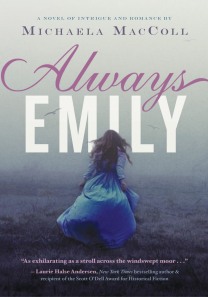
Emily and Charlotte Brontë are about as opposite as two sisters can be. Charlotte is practical and cautious; Emily is headstrong and imaginative. But they do have one thing in common: a love of writing. This shared passion will lead them to be two of the first published female novelists and authors of several enduring works of classic literature. But they’re not there yet. First, they have to figure out if there is a connection between a string of local burglaries, rumors that a neighbor’s death may not have been accidental, and the appearance on the moors of a mysterious and handsome stranger. The girls have a lot of knots to untangle—before someone else gets killed.
What’s Up with That Title? by Michaela MacColl
This week my new book Always Emily comes out. It’s the next novel in my series of literary mysteries – this one is about the Bronte sisters. Charlotte Bronte (who would write Jane Eyre) is 18 and her sister Emily (of Wuthering Heights fame) is 17. The sisters get involved in a mystery on their very own moors – a mystery that threatens their peace of mind, their brother and father and even their lives.
If my story is about two sisters, what’s up with that title? Always Emily? I’ve had lots of people ask me (especially my husband who gets this book mixed up with my last one about Emily Dickinson). The truth is this book was originally written in alternating chapters, first Charlotte then Emily. These sisters, despite having an identical upbringing, were completely different from one another.
Charlotte was the eldest sister and she assumed responsibility for the family. She’s the one with the plan – to keep the family solvent, to find employment and to get the sisters published. Emily, on the other hand, had zero ambitions other than to wander the moors and write her wild, uninhibited poetry and stories. Naturally Charlotte wrote about the repressed and moral Jane Eyre, while Emily penned a gothic melodrama of illicit love and revenge.
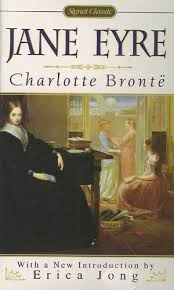
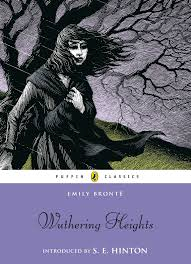
Ultimately I found the alternating narration way too confining. It didn’t seem fair to the reader to leave Charlotte locked in a trunk about to suffocate and then shift to Emily doing the most mundane of chores. So I switched to a third person, but let each sister own their own chapters. It worked so much better but I had to answer that pressing question, who is the main character?

I’m the eldest in my family and I’m the one who likes to plan – so my preference was Charlotte of course. But Emily was so much more fun! And if there’s to be a romance (and in these literary mysteries there is always a hint of some love in the air) Emily seems the more likely candidate. So Emily won out by a hair – Charlotte has adventures, but Emily is the main player.
Charlotte quite reasonably resents her sister’s lack of responsibilities. And how aggravating that Emily is the sister that attracts the masculine attention that Charlotte craved. More than once Charlotte mutters, “Emily, it’s always Emily.”
My editor and I liked this as a title because it sounds so romantic – but really it’s the lament of the plainer, older, duller sister. It’s always Emily!
Thanks for reading. I’d love to have you visit at www.michaelamaccoll.com , or follow me on Twitter at @MichaelaMacColl or check out Author Michaela MacColl on Facebook.
Read an excerpt at http://www.scribd.com/doc/198642656/Always-Emily
CCSS-Aligned Discussion/Teacher’s Guide at http://www.chroniclebooks.com/landing-pages/pdfs/AlwaysEmily_DiscussionGuide_FINAL.pdf
Win a signed copy of Always Emily!
Leave a comment, including your email address, for a chance to win an autographed copy of Always Emily by Michaela MacColl!
TERMS AND CONDITIONS:
- By entering, you confirm you are 18 years of age or older and reside in the U.S. or Canada.
- Winner will be notified by email and have 72 hours to claim the prize.
- Prize will be shipped directly to the winner by the author or her representative.
- This blog is not responsible for items lost or damaged in shipment.
- Void where prohibited.



Coming from Chronicle, March, 2013, is Nobody's Secret. Do you like a mystery? Are you intrigued by Emily Dickinson. Find this work and enjoy!
At fifteen, Emily meets a handsome stranger, a Mr. Nobody, who only days later is discovered dead in her family's pond. With Emily's inquest, she moves through the mystery to understand and honor this man's life. Author Michaela MacColl begins each chapter with excerpts from Emily's own poems. The blending of fiction and fact is engaging in this fast page turner.
"I'm Nobody, Who are You?" Watch for it, rgz!
Nobody’s Secret
A Novel of Intrigue and Romance
by Michaela MacColl
Chronicle Books, March 2013
By:
TCBR,
on 3/23/2012
Blog:
The Children's Book Review
(
Login to Add to MyJacketFlap)
JacketFlap tags:
Ages 4-8,
Ages 9-12,
Book Lists,
Yuyi Morales,
Elizabeth Cady Stanton,
Trina Robbins,
Books for Girls,
Cheryl Harness,
Daisy Bates,
Women's History,
Claire A. Nivola,
Shana Corey,
Selina Alko,
Amy Novesky,
Michaela MacColl,
Georgia O’Keeffe,
Freya Stark,
Anne Timmons,
Mo Oh,
Beryl Markham,
Teens: Young Adults,
Cultural Wisdom,
Susan B. Anthony,
Alexandrine Tinne,
Annie Smith Peck,
Daisy Gordon Low,
Delia Julia Denning Akeley,
Gina Capaldi,
Julie Cummins,
Lily Renee Wilhelm,
Louise Arner Boyd,
Lucy Evelyn Cheesman,
Nellie Cashman,
Penny Colman,
Q.L. Pearce,
Sylvia Earle,
Violet Cressy-Marcks,
Ynes Mexia,
Zitkala-Sa,
Add a tag
By Nicki Richesin, The Children’s Book Review
Published: March 23, 2012
Women’s History Month is a time to honor women who have helped shape the world and inspire us with their leadership and heroism. In this eclectic list of new titles, these remarkable women (Sylvia Earle, Georgia O’Keeffe, Daisy Gordon Low, Zitkala-Sa, Lily Renee Wilhelm, Beryl Markham, Elizabeth Cady Stanton, and Susan B. Anthony) all have one thing in common: adventurous spirits and the willingness to take great risks to make bold discoveries.
By Amy Novesky; illustrated by Yuyi Morales
Georgia O’Keeffe led life on her own terms, but when we usually think of her it’s likely sketching on her Ghost Ranch in New Mexico, not in tropical Hawaii. Amy Novesky depicts O’Keeffe on her tour of Hawaii where she painted gorgeous exotic flowers, exquisitely rendered by Yuyi Morales. Together they have created a unique tribute to this innovative artist and also to the beauty and splendor of the islands of Hawaii. For more information on Amy Novesky and her work, please read our interview. (Ages 6-9. Publisher: Houghton Mifflin Harcourt)
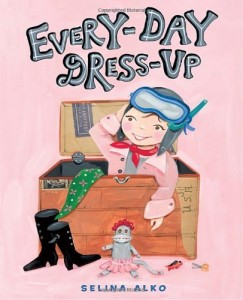 Every-Day Dress-Up
Every-Day Dress-Up
By Selina Alko
Inspired to give her daughter an alternative to the panoply of princess dress-up books, Selina Alko created Every-Day-Dress-Up for her. On Monday, she can become the First Lady of Flight Amelia Earhart and on Tuesday, Ella Fitzgerald the Queen of Jazz. The back of the book includes “biographies of a few great women” for further reading about our sheroes. There’s no need to purchase another pretty princess book, when you have this one full of modern day heroines for our daughters. (Ages 5-8. Publisher: Random House Children’s Books.)
By Claire A. Nivola
The beauty of Nivola’s book is the expansive sense, she creates with her story and breathtaking illustrations, for the immensity and wonder in our oceans. Once Sylvia Earle moved from her childhood farm in rural New Jersey to Florida, she begins her lifelong love affair with oceanography.
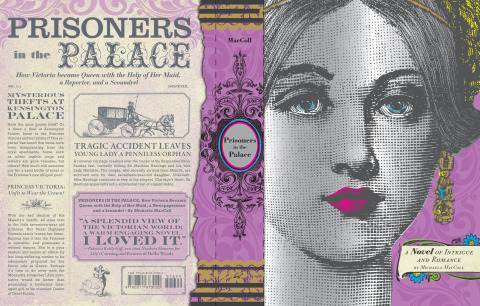
First, a shout out for the beautiful cover of Michaela MacColl's novel, Prisoners in the Palace. Gorgeous, right? I'm so impressed with the list Chronicle is creating for YA. Brava, to this independent publisher for keeping it small and powerful.
It's my pleasure to recommend Prisoners in the Palace, A Novel of Intrigue and Romance About How Princess Victoria Became Queen with the Help of a Maid, a Newspaperman, and Scoundrel. The title encapsulates the plot. Historical fiction lovers will certainly embrace this work about Princess Victoria's 17th year, while other YA lovers will be won over to the genre quickly. Stringing together true events with a fictional protagonist, the work is compelling and fresh for today's readers.
A recently orphaned Liza finds herself as lady's maid to the princess. While finding her own path, voice, and power, Liza assists the future queen in her own journey as well.
Visiting Michaela's blog I found she had said this at a recent school visit:
"I can’t have Victoria take a jaunt to Paris because I know she didn’t do that. But I can create new characters to move in and around documented facts. I told the kids that I do this not only so they will be interested in reading the book, but so I will be interested in writing the book."
Interesting! Here's to our historical fiction authors bringing to life the past! *a royal curtsy*
Prisoners in the Palace
by Michaela MacColl
Chronicle Books, October, 2010
























